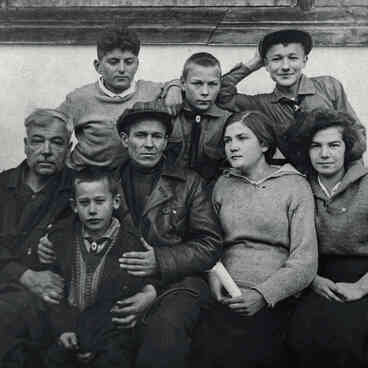The portrait of Count Dmitry Petrovich Buturlin was presumably painted in the 1820s by the artist Johann Ender. At the time the count was living in Florence due to worsening asthma. After his death the portrait was taken to Russia and presented to the Obninsky family, the new owners of the Belkino estate. Countess Anna Buturlina funded Varvara Obninskaya’s education, and the latter kept the family portraits of her benefactress in the manor house. After the revolution, the descendants of the Obninskys preserved the paintings and donated them to a museum.
Count Dmitry Buturlin was one of the wealthiest people of the 18th century, a nobleman by birth, a bibliophile, a man of encyclopaedic knowledge. He was the first director of the Hermitage, a Privy Councillor, a senator and a chamberlain. Count Buturlin was fluent in several languages, was fond of white magic, tricks, and physical experiments. His circle of acquaintances included Karl Bryullov, Nikolai Karamzin, Pyotr Vyazemsky, Orest Kiprensky and the Pushkin family.
Dmitry Buturlin was born in 1763 in St Petersburg. He was the son of Count Pyotr Buturlin and Countess Maria Vorontsova, grandson of an Elizabethan field marshal and godchild of Catherine II. In infancy, little Dmitry was promoted to sergeant of the Guards. He was orphaned at an early age and placed in the care of the Vorontsov family.
After graduating from the St Petersburg Naval Cadet Corps, Count Buturlin was made adjutant to Prince Potemkin and then transferred to the Collegium of Foreign Affairs. The young man sought a trip to Paris, where the Great French Revolution had begun, but Empress Catherine II forbade him to go. Then the 22-year-old Buturlin resigned, left the capital and moved to Moscow. There he married his second cousin Anna Vorontsova who received the estate of Belkino in Kaluga province as dowry.
Dmitry Buturlin was a keen horticulturist; he set up a botanical garden in Moscow, grew exotic flowers and southern trees, studied botany and conducted experiments. His garden was renowned in high society Europe, and he arranged two magnificent orangeries at his Belkino estate. At the insistence of his doctors, Dmitry Buturlin left Russia at the age of 54 for Italy, where he lived for 12 years. Count Dmitry Baturlin was buried in a Greek church in Livorno.
Count Dmitry Buturlin was one of the wealthiest people of the 18th century, a nobleman by birth, a bibliophile, a man of encyclopaedic knowledge. He was the first director of the Hermitage, a Privy Councillor, a senator and a chamberlain. Count Buturlin was fluent in several languages, was fond of white magic, tricks, and physical experiments. His circle of acquaintances included Karl Bryullov, Nikolai Karamzin, Pyotr Vyazemsky, Orest Kiprensky and the Pushkin family.
Dmitry Buturlin was born in 1763 in St Petersburg. He was the son of Count Pyotr Buturlin and Countess Maria Vorontsova, grandson of an Elizabethan field marshal and godchild of Catherine II. In infancy, little Dmitry was promoted to sergeant of the Guards. He was orphaned at an early age and placed in the care of the Vorontsov family.
After graduating from the St Petersburg Naval Cadet Corps, Count Buturlin was made adjutant to Prince Potemkin and then transferred to the Collegium of Foreign Affairs. The young man sought a trip to Paris, where the Great French Revolution had begun, but Empress Catherine II forbade him to go. Then the 22-year-old Buturlin resigned, left the capital and moved to Moscow. There he married his second cousin Anna Vorontsova who received the estate of Belkino in Kaluga province as dowry.
Dmitry Buturlin was a keen horticulturist; he set up a botanical garden in Moscow, grew exotic flowers and southern trees, studied botany and conducted experiments. His garden was renowned in high society Europe, and he arranged two magnificent orangeries at his Belkino estate. At the insistence of his doctors, Dmitry Buturlin left Russia at the age of 54 for Italy, where he lived for 12 years. Count Dmitry Baturlin was buried in a Greek church in Livorno.


